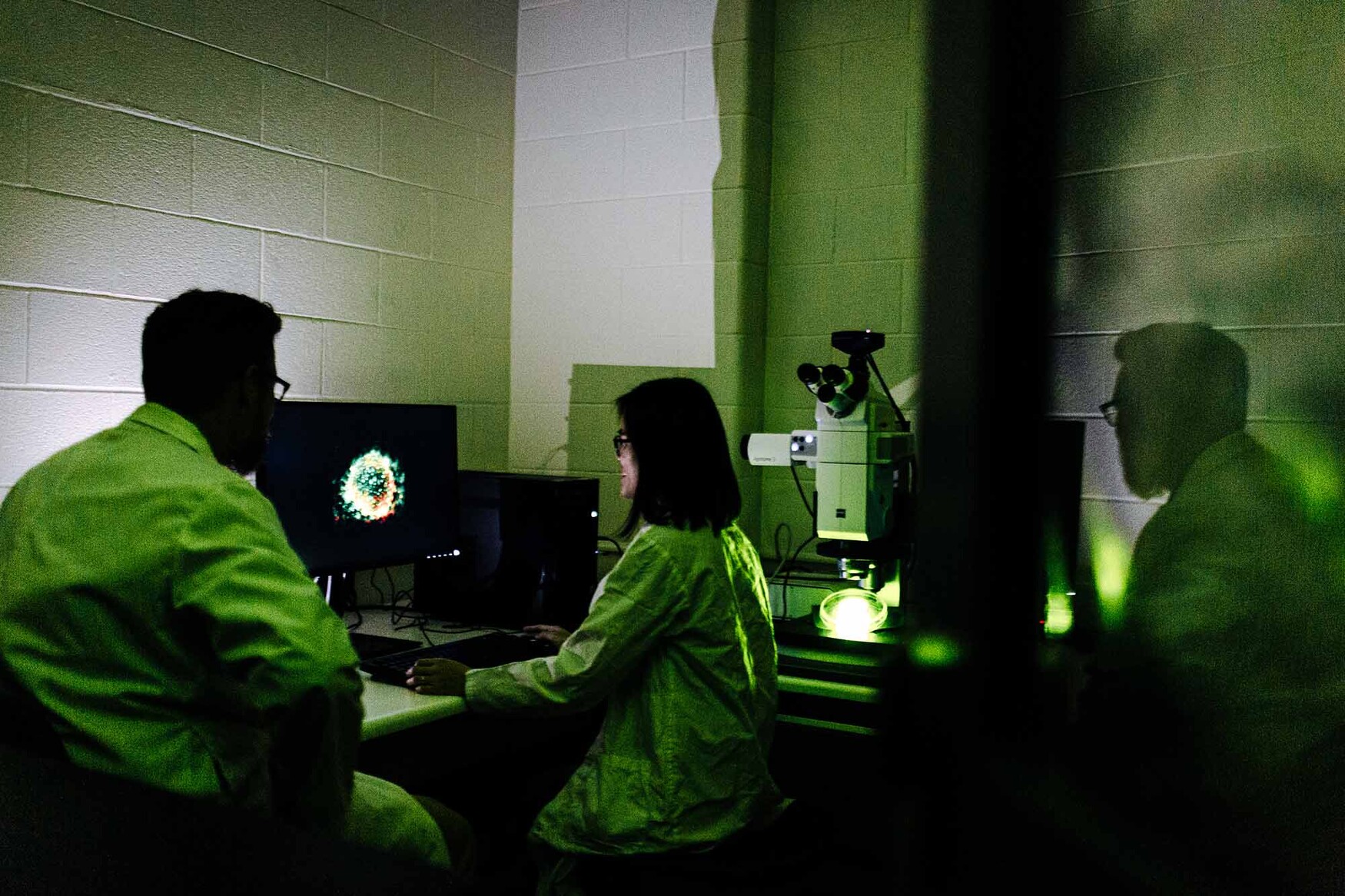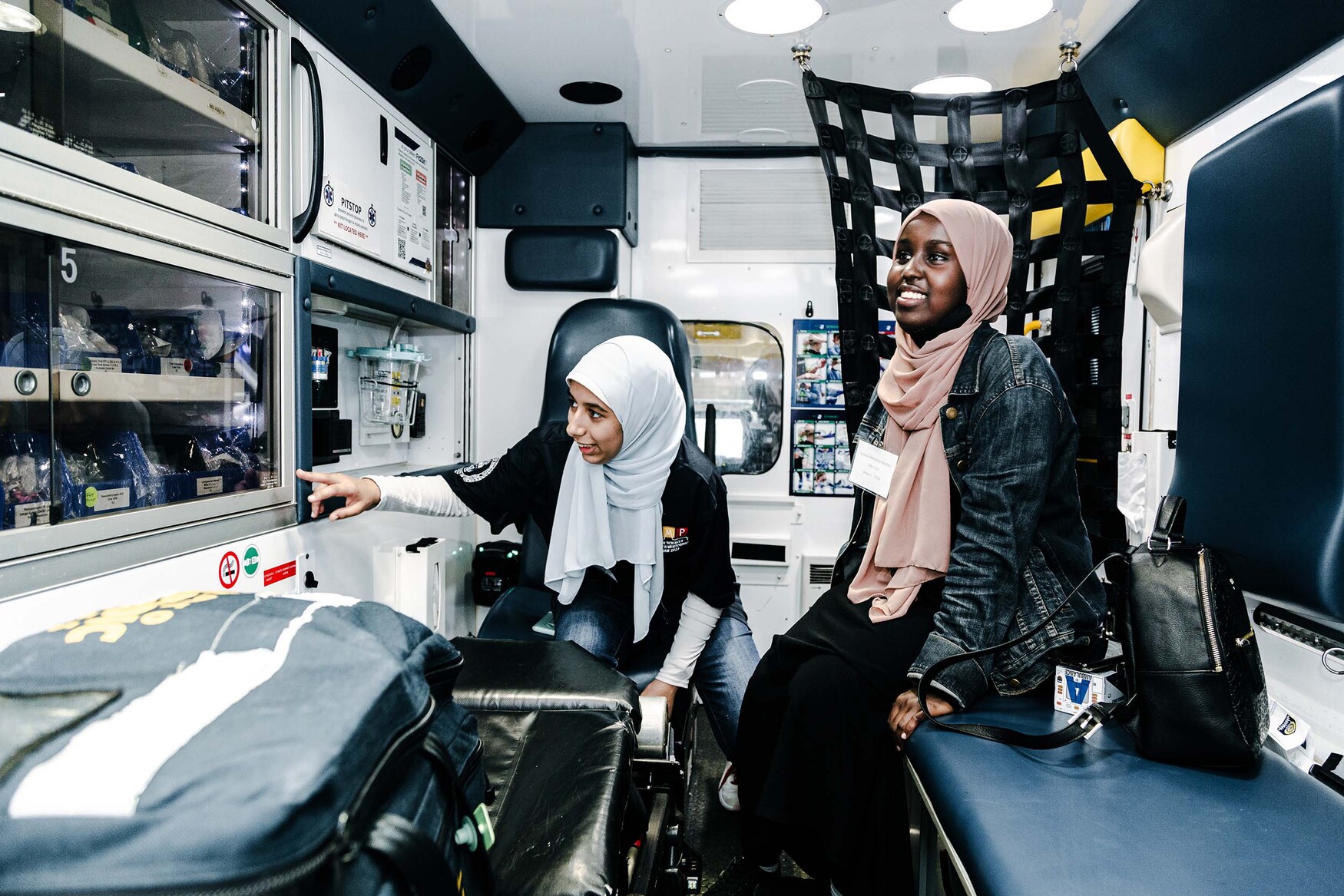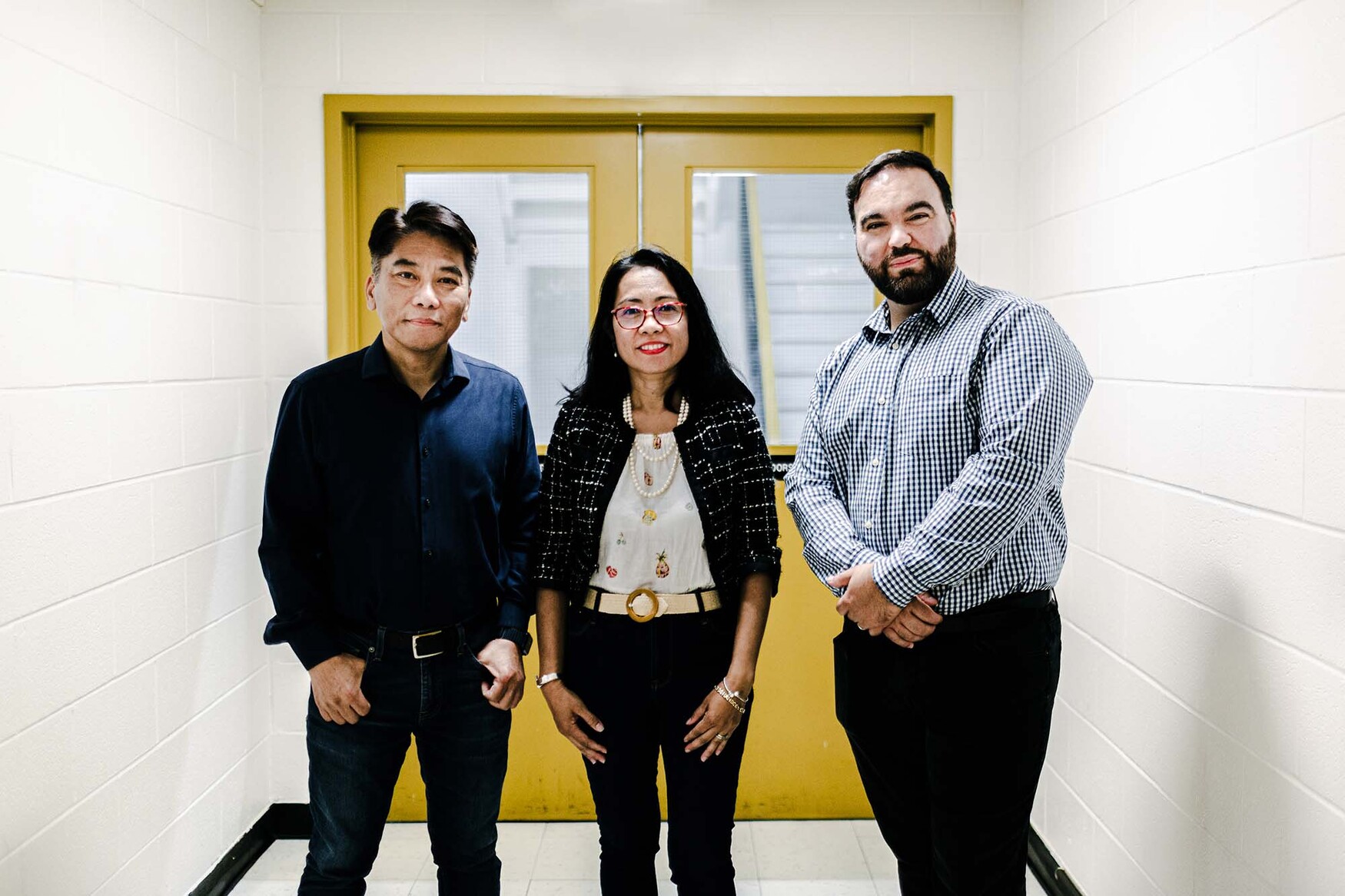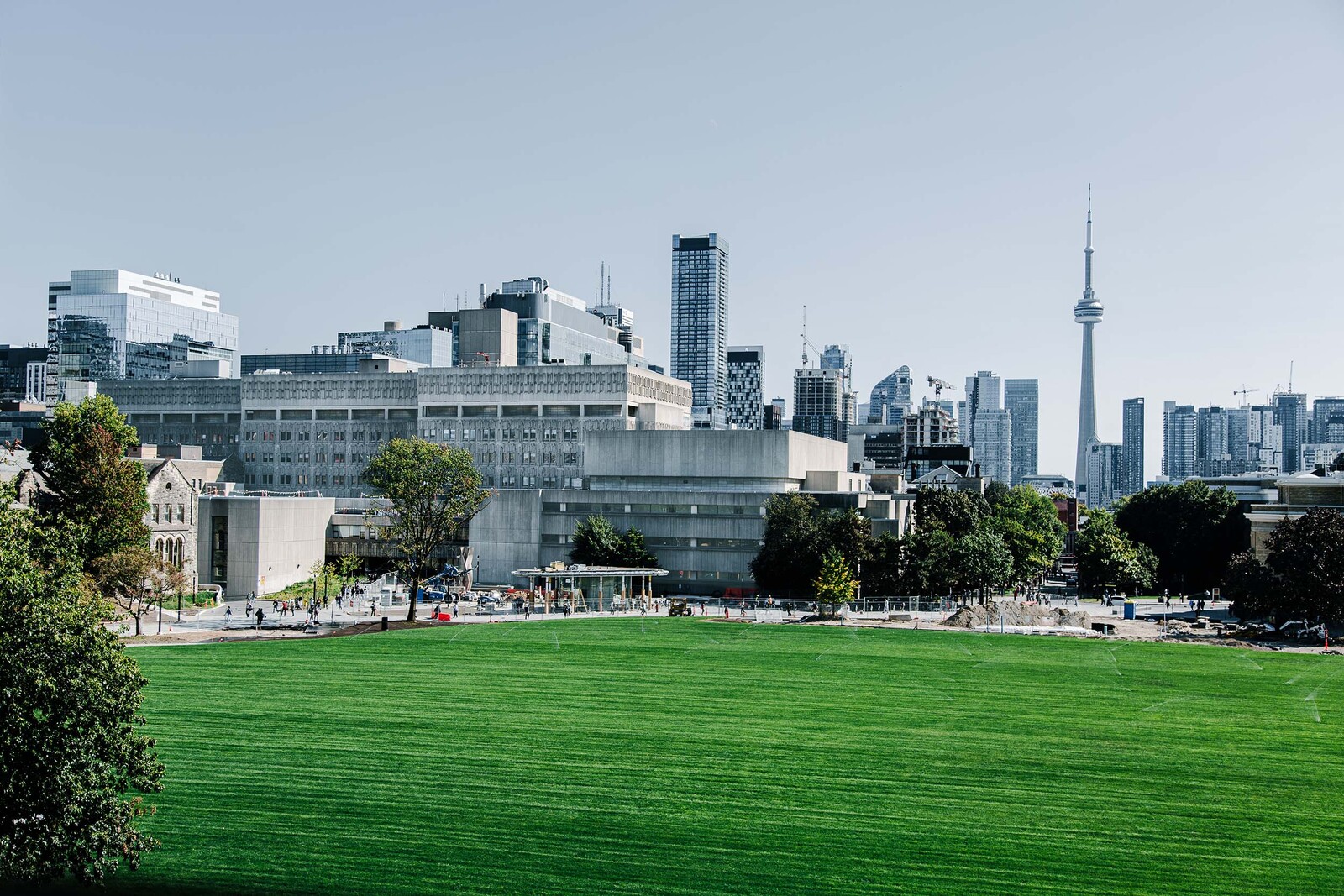
Dean's Report 2023
On Leadership and Legacy
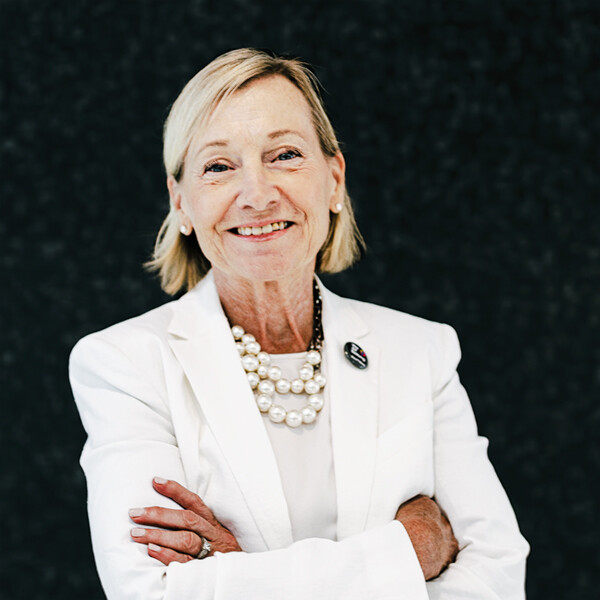
I’ve always loved the optimism and promise of a new academic year. It’s an opportunity to recommit to our roles as leaders and colleagues, teachers and learners — and to consider the impact we make as educational, research and clinical leaders in our community and beyond.
As Interim Dean of the Temerty Faculty of Medicine, I’m pleased to share our 2023 Dean’s Report, a snapshot of collective progress on our Academic Strategic Plan over the last year.
But first, I’d like to offer a reflection on the leadership and legacy of Trevor Young, who is leaving the Dean’s office and stepping into the role of Vice-President & Provost for the University of Toronto in January 2024.
From the start of his first term in 2015, Dean Young — Trevor — had a clear vision: if we were to leverage the power of our location and the strength of our network, the Temerty Faculty of Medicine (then, the Faculty of Medicine) needed to better reflect the diverse and dynamic city that we serve, and the research and health-care ecosystem in which we work and learn.
Thus began a process to build out a leadership team, to invite feedback from our community, and to bring that vision to life by embedding the principles of equity and inclusion in all that we do, including:
-
Investing in outreach to underserved populations and pioneering new MD admissions pathways to widen the pool of highly qualified and committed students.
-
Valuing and supporting learners of all backgrounds and helping equip and empower them throughout their educational journey.
-
Renewing aspects of curriculum, recruitment practices, policies and procedures to uncover and address biases and bring in new perspectives, many of which had long been ignored or actively marginalized by the medical establishment.
-
Ensuring wellness is central to our support of all faculty, staff and learners.
No question there is much more work to do. But these foundational investments will continue to have impact for years to come. Trevor’s commitment to ensuring a welcoming and inclusive environment extends to all aspects of learner, faculty and staff experience, from addressing historical wrongs through to present-day accountability for ensuring professional and respectful conduct across Temerty Medicine.
So much of this work advances because of the strong relationships across the Toronto Academic Health Science Network (TAHSN), including deep and productive research partnerships and education programs, all of which have flourished under Trevor’s leadership:
-
We are global: The University of Toronto is the third-most prolific institution in the world — and second among universities — for health sciences research, according to 2023 rankings by the publisher of Nature.
-
We are AI leaders: In three short years, the Temerty Centre for Artificial Intelligence Research and Education in Medicine has grown to a network of more than 1,200 members from 24 universities and 90+ organizations across Canada: establishing leading educational programs, funding research opportunities, and creating a secure data platform for applied AI learning and research in health care.
-
We are building an iconic future: Planning for state-of-the-art educational and research space is underway for the new James and Louise Temerty Building, which will replace the outdated west wing of the Medical Sciences Building on King’s College Circle.
Indeed, the transformational generosity of the Temerty family’s historic $250M gift — coming to fruition just as the pandemic upended our world — will be one of the most enduring legacies of Trevor’s leadership and tenure as Dean.
Not only has this gift allowed us to advance a range of strategic priorities informed by our community but in those early terrifying days of COVID transmission we were able to provide rapid support to health-care providers, as well as ensure the city’s only research lab licensed to safely handle SARS-COV-2 — located at Temerty Medicine — would work full-tilt on critical questions to help combat what was then an unknown and deadly infectious agent.
The impact of the Temerty gift will extend for generations. There are a suite of innovative educational and research initiatives still to come and in progress, including the Scarborough Academy of Medicine and Integrated Health (SAMIH), a multidisciplinary health sciences project that underscores the province’s commitment to providing underserved areas with comprehensive, community-based care. With our colleagues at U of T Scarborough, other U of T health faculties, and Scarborough hospitals and health networks, we have all the components to deliver on this commitment.
On behalf of all of us across the Faculty, thank you, Trevor. For your vision as a leader, your generosity as a colleague and your continued support for a strong and vibrant Temerty Medicine community.
Patricia Houston
Interim Dean and Vice Dean Medical Education, Temerty Faculty of Medicine
Interim Vice Provost, Relations with Health Care Institutions, University of Toronto

Professors Cindi Morshead and Milos R. Popovic
Ecosystem of Collaboration
In the 2022-23 academic year, we strengthened and grew our ecosystem of collaboration by fostering new and existing connections within our Faculty and University, and across Toronto and around the world.
We continued to plan for and build a new extra-departmental unit that will address global ecological changes that impact health, including climate change, pollution, and depletion of biodiversity and natural resources. This new unit will enable research and education that advances planetary health by promoting health systems that integrate sustainable practices. The unit will launch this fall pending approvals from the University and partner faculties, which include the Dalla Lana School of Public Health, the Leslie Dan Faculty of Pharmacy and the Lawrence S. Bloomberg Faculty of Nursing.
Advanced planning also continued for the new Scarborough Academy of Medicine and Integrated Health (SAMIH). This partnership with the University of Toronto Scarborough, the faculties of nursing and pharmacy, and local Scarborough hospitals and health networks will help address the urgent need for more physicians and health professionals in the Eastern Greater Toronto Area. The academy’s home will be a new building on the UTSC campus, set to open in 2026, and designed by Dutch and Canadian architectural firms.
The Toronto Academic Health Science Network (TAHSN) strengthened integration among the University and GTA hospitals. This partnership was vital in our response to the COVID-19 pandemic, and has helped us find new ways of working together to collect data, develop e-learning modules and share safety guidelines. For example, we improved our ability to identify and predict cases of hospital-acquired delirium an estimated three-fold, through the GEMINI study platform and an AI collaboration with both U of T’s Faculty of Applied Science & Engineering and the Vector Institute.
Collaboration within TAHSN also enabled recent improvements in the delivery of our medical education programs. The network was a supportive partner as we built a common pathway for learners in the MD Program and in Postgraduate Medical Education to discuss, disclose or report mistreatment — a continuing priority for our Faculty. We also worked closely with TAHSN on plans to streamline the onboarding process for learners starting clinical placements, by reducing duplicate training requirements and adopting e-learning modules.
These changes are part of an ongoing process of continuous engagement and improvement across our medical education programs — a principle we have long embraced and recently emphasized in the inaugural Medical Education Strategic Plan 2023-2025. Collaboration is key to realizing the priorities in this new plan, as we continue to align and harmonize our programs across the continuum of medical education, from undergraduate to postgraduate and continuing professional development.
'When you pool skill sets together, it’s not one plus one'
For Professor Milos R. Popovic, the new Director of the Institute of Biomedical Engineering, the most exciting advances of his 20-year career have required some discomfort. . . .
By Gabrielle Giroday
That’s because Popovic, who is also Director of KITE at the Toronto Rehabilitation Institute-University Health Network, believes successful researchers need to work with experts of other backgrounds to achieve successful results.
“I’ve always been enthusiastic about bringing people together who have very different skill sets to work on the same project,” he says.
“Researchers have a tendency to work in silos. It’s natural. If I’m an engineer, I focus on engineering. Medical doctors do the same thing. But the excitement and the new things happen when you are very uncomfortable. And the way to become uncomfortable is to work with people in varied fields, who share the same goal.”
Take Popovic’s current work with Cindi Morshead, Professor and Chair of the Temerty Faculty of Medicine’s Division of Anatomy at the Department of Surgery.
The duo are using electrical fields and electrical stimulation to multiply and move stem cells in the brain.
The hope is that their work will create new methods of treating people who have experienced strokes, or traumatic brain injuries.
“When you pool skill sets together, it’s not one plus one. It’s three or four,” he says. “Working with Prof. Morshead is a perfect example of that. She’s the best in working with stem cells. And I bring an engineering background with a knowledge of electrical stimulation and devices. We’ve come together to create new technologies. It’s only when you create these types of ecosystems of expertise that you come up with something exceptional.”
Initially, Popovic’s own research started by focusing on treatments for people with spinal cord injuries. His work then grew to developing technological tools for people who had experienced strokes, and then extended again to research on developing therapies for people with traumatic brain injuries.
Currently, in addition to his work on stem cells with Morshead, Popovic is also running a clinical trial. The trial will evaluate a therapy that stimulates facial muscles called Duchenne markers, to treat people with depression.
Temerty Medicine is unique because of its relationships with hospitals through the Toronto Academic Health Science Network, he says.
“From the Medical Sciences Building on campus, you are within a five-minute walk of some the best health care institutions in the world. What is exciting is that all of these hospitals have direct partnerships and relationships with Temerty. It’s one-of-a-kind,” he says. “With these relationships, you have access to patients and access to funding that other schools don’t have. It’s what makes Temerty a very exciting place.”
Popovic points to the CenteR for Advancing Neurotechnological Innovation to Application (CRANIA). The centre — which develops devices to assist people with neurological conditions — opened in May 2021, launched by the University Health Network and the University of Toronto.
“Physically, CRANIA is located at Toronto Western Hospital, where there are operating rooms and MRI systems, which are needed for these kinds of projects. But all the materials sciences and physiology work is done at U of T. This is the only centre in the world that has this kind of collaboration,” says Popovic.
The results speak for themselves, he says.
“You have design of neural prosthetics done by engineers, physiologists and computer scientists, then you cross the street and work with neurosurgeons, neurologists and physiotherapists, who can implant the device in the patient and test it with the patient,” he says. “It’s remarkable.”
Groundbreaking Imagination
The last academic year saw Temerty Medicine cultivate and benefit from groundbreaking imagination in health research, education and leadership.
We launched the Canadian Hub for Health Intelligence and Innovation in Infectious Diseases, known as HI3. This network of more than 80 academic, hospital and industry partners, led by the University of Toronto and co-directed by two Temerty Medicine faculty members, will bolster Canada’s response capacity against current and future infectious threats. The hub will spur large-scale research on interventions such as vaccines and therapeutics; innovations in biomanufacturing processes linked to AI; and health intelligence based on the best available data, viewed with an equity lens.
We also worked closely with our U of T and hospital partners on an economic impact report, which for the first time will compare the Toronto Academic Health Science Network to leading Canadian and North American life sciences research clusters. This report will provide a detailed picture of the network’s contributions to new knowledge, highly qualified personnel, industry-research partnerships and startups. The findings identify areas of research strength and opportunity, and will enable better benchmarking relative to peer networks in Montreal, Vancouver, Boston, San Francisco and globally.
Mindful of the need to attract and retain research talent, our Office of Research & Health Science Education developed several initiatives for graduate students. Critically, these include funding and support to increase the annual stipend for those in master’s and doctoral programs to $40,000, effective September 2024. We also created three entrance scholarships for our highest-performing graduate student applicants, to help encourage more high-quality applications to our graduate programs. And we put a renewed emphasis on graduate student recruitment through improved communications, with a particular focus on outreach and social media.
At the same time, our faculty members garnered over 90 honours and awards for their contributions to research and education globally, nationally and locally. Among them, Professor Daniel Drucker received the Wolf Prize in Medicine for his research on glucagon-like peptides, hormones produced in the gut that underpin new drugs to treat metabolic and intestinal disorders. Professor Tak Mak was honoured with the Pezcoller Foundation-AACR International Award for Extraordinary Achievement in Cancer Research. And Professor Ruth Ross received the Mechoulam Award for Outstanding Contributions to the Field of Cannabinoid Research, from the International Cannabinoid Research Society.
Study uncovers how the gut microbiome boosts immune development
Most readers of the now-famous line, “I am large, I contain multitudes,” from American poet Walt Whitman’s work Song of Myself, believe he was referencing the many experiences and dimensions a person and society can have. . . .
By Betty Zou
Ask a microbiologist or immunologist, on the other hand, and they are likely to share a more literal take on those words. In the nearly 170 years since Whitman wrote his poem, science has uncovered that humans do indeed contain multitudes — of tiny organisms that live in our bodies and affect health.
Now, a new study from University of Toronto researchers is shedding more light on how the community of microbes in our gut contribute to a well-functioning immune system and defend against harmful pathogens.
“The fact that there are these vast ecosystems of bacteria, fungi, viruses and other microbes living inside us really reshaped the way I see the human body,” says Pailin Chiaranunt, a PhD student in the Department of Immunology at U of T’s Temerty Faculty of Medicine and lead author of the study.
Called the microbiome, this collection of microorganisms that live in and on our bodies plays a critical role in health and disease. Certain microbiome features — for example, whether there is more of one species or less of another — have been linked to a variety of health outcomes, from autoimmune and mood disorders to cancer risk and treatment response.
After learning about the microbiome as an undergraduate student and then falling in love with immunology as a research technician, Chiaranunt became interested in how the microbiome and immune system interact with each other, particularly in the gut. This led her to U of T to pursue a PhD with Arthur Mortha, an Associate Professor of Immunology who studies the crosstalk between the immune system and gut microbiome.
“The gut is probably one of the most dynamic ecosystems in the body because you essentially have the outside environment inside of you,” says Chiaranunt. “There’s a lot of work the immune system must do to maintain a balance between tolerating helpful microbes, food and other outside factors, and being able to mount an effective defense against pathogens like Salmonella that might show up.”
In their study published in Science Immunology, the researchers turned their attention to macrophages, key immune cells whose job is to gobble up cellular debris and foreign microbes and kick start the immune response.
Using mouse models, they first found that the transformation of monocytes, a type of white blood cell, into macrophages in the gut requires both a diverse microbiome and a host factor called CSF2. Then, in a series of elegant experiments, Chiaranunt and her colleagues identified the microbial factor driving macrophage development as ATP, a molecule that is universally used as energy currency across all forms of life.
Their work also uncovered how microbial and host factors work together to support a robust immune environment in the gut: ATP produced by resident bacteria in the gut activates immune cells within a network of small, lymph node-like structures across the intestinal tract. These cells then produce the host factor CSF2 which spurs monocytes in the structures to become response-ready macrophages.
The researchers further showed that the macrophages born from this pathway have high metabolisms and as a result, produce a lot of antimicrobial chemicals called reactive oxygen species. The abundance of these chemicals, in turn, contribute to the immune system’s ability to ward off microbial intruders in the gut.
“That was a really cool finding because it suggests a new way in which microbial metabolism can directly impact immune cell metabolism,” says Chiaranunt, who recently defended her PhD thesis and is preparing to start a postdoctoral fellowship at the University of California San Francisco.
While other studies have also found a link between the microbiome and macrophage development, this paper is one of the first to uncover how gut bacteria triggers white blood cells to become macrophages. The identification of CSF2 as a key contributor to that process also highlights the potential of CSF2-targeting treatments to modulate the immune response in people with autoimmune disorders and inflammatory bowel disease.
“Our results bring us a big step closer to understanding the biochemical language spoken by the microbiota,” says Mortha. “Assembling a comprehensive dictionary for this language will help us to interpret when and why friendly and offensive messages are used by gut microbes to communicate with our immune system.”
In addition to other members of Mortha’s lab, this study also included collaborators Slava Epelman, a clinician scientist in U of T’s Department of Medicine and at University Health Network, and Thierry Mallevaey, an Associate Professor of Immunology at U of T. Mortha, Epelman and Mallevaey are all members of the Emerging and Pandemic Infections Consortium, a U of T Institutional Strategic Initiative focused on developing innovative responses to infectious threats.
Excellence Through Equity
Excellence through equity continued to be an area of intense activity for Temerty Medicine in 2022-23.
We hosted an event on antisemitism with hospital partners, which included a formal apology from the Dean for historical quotas on Jewish medical students in Toronto, as well as the sharing of new research on the experiences of Jewish doctors affected by the quotas. We also held several antisemitism workshops for Temerty Medicine equity leads and clinical department chairs, and planned for a TAHSN lecture on the history of injustice in medicine and health care.
We also developed key infrastructure to support our efforts in equity, diversity, inclusion, Indigeneity and accessibility across Temerty Medicine. Part of this work included planning retreats for the Office of Inclusion and Diversity, Office of Indigenous Health and Office of Access and Outreach to determine foundational values, vision and mission statements. All three offices made progress on equity-related goals in the last year:
Office of Access & Outreach
-
Launched a new website, hired Program Coordinator Chinelle Mcdonald and initiated high-school outreach activities that reached 1,000 students.
-
The STEAM Design program ran in-person for the first time, offering interactive sessions led by researchers, graduate students and practitioners to help students build skills for solving health-care system issues.
-
The Summer Mentorship Program, which offers exposure to potential health-care careers to high school students from equity-deserving groups, saw its largest in-person cohort ever this past summer.
Office of Inclusion & Diversity
-
The Diversity Mentorship Program received 181 learner applications, with 122 faculty mentors available, and resumed both virtual and in-person events.
-
Implemented a communications strategy for commemorations and religious holidays, featuring messages from senior leaders, Q&As, and social media content.
-
Launched Temerty Medicine Community Connection series with three events: Latin X & Caribbean, Trans* at Temerty Medicine, and Muslim Community.
Office of Indigenous Health
-
Expanded the role of the MD Program Indigenous Health Curricular Lead, and supported the role of Elder-in-Residence through liaison with the Centre for Wise Practices in Indigenous Health at Women's College Hospital.
-
Co-led an outreach visit to the James Bay area, to help establish community connections and strengthen links to the Weeneebayko Area Health Authority.
Summer Mentorship Program expands reach and impact
Kamiylah Tynes-McKenzie has long dreamed about a career in health care. . . .
By Erin Howe
As she planned her future over the past year, the 18-year-old turned to the Temerty Faculty of Medicine’s Summer Mentorship Program (SMP) to draw a clearer picture of her goal and how to make it a reality.
The SMP gives high school students of African or Indigenous ancestry an opportunity to learn about health-sciences education at the University of Toronto. Over four weeks in July, participants explore medicine, rehabilitation sciences, pharmacy, dentistry, kinesiology, nursing, public health and social work — through hands-on activities, lectures and special projects.
Students also receive a science credit they can apply toward their Ontario Secondary School Diploma.
“The SMP gave me a new understanding of the research process and how various health professions help people,” says Tynes-McKenzie. “I enjoyed hearing from the speakers who gave open and honest insight into the work they do. There’s a sense of mystery surrounding a lot of fields, but to hear an insider’s perspective was valuable.”
This year, the SMP welcomed 108 students, the largest in-person cohort to date. The program began in 1994 with seven participants, and since then about 1400 students have participated. Roughly one-quarter have gone on to pursue postsecondary education and careers in the health sciences or health-care professions.
Some past participants have also returned to inspire new generations of young people.
“The SMP played a pivotal role in shaping the way I thought about my future,” says physiotherapist Joanne Ukposidolo, a student in the program nearly 20 years ago who is now a program volunteer. “It opened up the world of health professions and allowed me to see the many different opportunities to explore. I want to give back to the community and guide students, help them see, navigate and execute on the endless career possibilities for them in health-care fields.”
Though many program students come from Toronto and surrounding communities, some travel from other parts of Ontario and stay in student housing on campus. This summer, Temerty Medicine welcomed five students from outside the Greater Toronto Area, including two from the James Bay coast.
Temerty Medicine’s Office of Access and Outreach and Office of Indigenous Health are working to spread the word about the SMP to Indigenous learners in particular, in remote, northern communities.
Last winter, the Faculty was one of several Ontario medical schools invited by the Weeneebayko Area Health Authority to visit communities in the James Bay coast region. Temerty Medicine staff Lindsey Fechtig and Renée Huntley visited the area to share information about the SMP and STEAM Design, an experiential learning program for high-school students from equity-deserving groups who want to help solve health-care system issues.
Fechtig and Huntley hope to make the trip an annual event, to help encourage more young Indigenous people to take part in the SMP and other programs at Temerty Medicine.
A related initiative, SMP Discover, allows students who have completed the SMP to continue their learning through additional community-building experiences, internships, mentorship opportunities and online workshops.
Students in U of T and other undergraduate programs can also join Community of Support, which provides information about, and help with, the medical school admissions process as well as other experiences for learners from under-represented groups.
“We have strong partnerships, not only with our Office of Indigenous Health, First Nations House and health-professions faculties at U of T, but also with the Ministry of Education, several local school boards and many community organizations,” says Ike Okafor, who founded and leads the Office of Access and Outreach. “We’re thankful to our partners and thankful for the unwavering support in inspiring and transforming our participants’ futures.”
For Tynes-McKenzie, her time in the SMP is now a memory, but she has a sharper focus for her future and is in the first semester of a medical sciences program at Western University. She is equipped with a new network of contacts in health care, she says, and is more excited than ever about her plan to apply to medical school and a new dream of becoming a neurosurgeon or cardiologist.
Support Health & Wellbeing in Everything We Do
Wellness was a continuing concern for our Faculty the past year, as the effects of the COVID-19 pandemic reverberated and the health-care system faced unprecedented stress. We worked diligently to expand and strengthen wellness supports and resources for learners, faculty members and staff across programs and departments.
Our Learner Experience Unit is now fully staffed and addressing a wide range of learner concerns. In 2022-23, the unit dealt with over 150 new concerns of mistreatment from undergraduate and postgraduate medical education learners on potential unprofessional behaviour, discrimination or discriminatory harassment, or sexual harassment and violence. The unit recorded over 70 outcomes including expectation-setting conversations, education interventions, disciplinary outcomes, systems-level interventions or other mechanisms.
The Learner Experience Unit also engaged in an expansion of supports for learners in Medical Radiation Sciences, the Physician Assistant program, and rehabilitation sciences programs. The unit built on pre-existing faculty development efforts, began to explore learner-to-learner mistreatment as a priority area, and worked closely with TAHSN hospitals to ensure an integrated approach to allegations of mistreatment, including by patients and families. These and other efforts are detailed annually in Temerty Medicine’s Learner Experience Report.
The Centre for Faculty Development launched or revamped several programs that support teaching, curriculum development, leadership, scholarship and advocacy. The Enhanced Teacher Performance program, for example, is a new one-to-one, coaching based program that includes simulated teaching encounters and customized learning. The New and Evolving Academic Leaders program, which has run for over a decade, includes refreshed content and a stronger focus on equity, diversity, inclusion, Indigeneity and accessibility.
Also this past year, we offered an applied mindfulness program for medical personnel, through our Office of the Associate Dean, Clinical Affairs and Professional Values. Led by Professor Elli Weisbaum, the program ran in two-hour sessions over five weeks and attracted 22 participants. Learning goals included competencies in work-life balance, managing conflict and difficult conversations, and organizers assessed the program’s impact through a research study.
Fostering learning among medical educators
Learning is at the heart of everything that university faculty members do, whether it's supporting trainees as they gain new skills, uncovering new knowledge through research or taking part in professional development activities. . . .
By Erin Howe
A new initiative called the Enhancing Teacher Performance (ETP) program is designed to help educators at the Temerty Faculty of Medicine sharpen their teaching skills.
The program was launched by the Centre for Faculty Development in the fall of 2022, to help faculty members enhance their teaching effectiveness in clinical and laboratory settings. One-to-one coaching is complemented by customized learning activities, simulated teaching encounters and debriefing, targeted workshops and curated resources.
Sev Perelman, a Professor in the Department of Family and Community Medicine who has been teaching for many years, became one of the ETP program’s first participants after he received some negative learner feedback.
“We can all fall into habitual behaviour patterns. Some might be helpful, but others may not be,” Perelman says. “The ETP program helped me evaluate my teaching approach. I’m developing more empathy for learners, which took on new importance after I did the program. The coaching, role-playing, and everything I learned helped me change my mindset and the way I check in with and provide feedback to trainees. The experience was profound and impactful.”
Professor Latika Nirula, Director of the Centre for Faculty Development, says that some participants register for the ETP program after discussing mentorship with their departmental chairs, while others are referred to address performance concerns raised by learners or departmental leaders.
The idea, she says, is to support lifelong learning and encourage a growth mindset among educators.
“Some of these faculty members have won awards for teaching at other points in their career,” says Nirula, who is also the program’s lead and one of its coaches. “That just shows how important it is to continue working to refine one’s process. The environment is changing, and people’s personal needs and approaches can change, too. New evidence emerges all the time to show us how to best support medical education. We may all need to adapt over time.”
The program is open to all faculty members who wish to register, regardless of how long they’ve been teaching. The program is designed to be flexible and to allow faculty members to join at any time. It can take participants three to six months to complete a personalized plan, depending on their own schedules and when workshops are offered.
Once they’ve completed the program, faculty may continue to support their own ongoing development by engaging with the centre’s extensive programming as general centre members for free.
As Temerty Medicine works toward promoting wellness, resilience and respect within the learning environment, the ETP program offers each participant a plan tailored to meet their individual goals and work context. Coaches also consider student feedback and any skills the teacher may want to focus on.
“It’s around the faculty shifting practices that aren’t working,” Nirula says. “Our learners feel more empowered to share concerns about their experiences in the teaching environment. We want faculty to embrace that feedback and create spaces for more effective dialogue. Constructive feedback needs to go both ways.”
Nirula also hopes to expand and diversify the pool of coaches, which currently stands at three, as the program attracts more participants.
Having channeled negative feedback into positive changes, Perelman credits the ETP program with helping him foster a more supportive relationship with his students and says he hopes more of his colleagues will benefit from the program, too.
Infrastructure, Policies and Technology that Compel Collaboration and Support Sustainability
In 2023, Temerty Medicine launched MedIT, which provides a new framework for the information technology services formerly delivered by Discovery Commons. This renewal of IT services was based on a comprehensive review and consultation process, toward improved network and information security, data management, desktop and mobile support, and software and backup solutions. These changes will help protect our infrastructure and align the Faculty with the University’s information security strategy, in a time of growing digital risks.
We also made good progress on plans for the new James and Louise Temerty Building in the last year. This major project will see the west wing of the Medical Sciences Building replaced with an advanced facility for leading-edge research and education. Design of the new building will be led by architecture firms Diamond Schmitt and MVRDV, and will include sustainability features that support the University’s goal of net-campus carbon neutrality by the year 2050. The building is scheduled to open in 2028, with ground-breaking likely in 2025.
To enable construction of the new building, we are relocating west-wing labs and offices, including our Combined Containment Level 3 lab for the study of high-risk pathogens. We have also moved several administrative units, including the TAHSN office, to revamped space at 777 Bay Street. These moves required intense planning over the last year, and the willingness of staff and faculty members to work with our Facilities Management and Space Planning teams to ensure transitions were as smooth as possible.
Staff recognition and development have been a focus for our Office of the Chief Administrative Officer, led by Denis Bourguignon. The office introduced a monthly newsletter that has generated great enthusiasm and a high click-through rate, and instituted Temerty Medicine Connections, a regular coffee-and-conversation event that brings together new staff with those celebrating a work anniversary. The office also helped arrange a return of the annual staff barbecue and Staff Impact Awards, which recognize the great and often unsung work our administrative, technical and research staff.
MedIT: new name, new mission
A total transformation. That’s the result of a two-year initiative to restructure, rethink and reimagine information technology services at the Temerty Faculty of Medicine. . . .
By Blake Eligh
Dimitris Keramidas is leading the phased renewal of the Faculty’s IT services, previously provided through Discovery Commons.
An electronic and computer engineer with a business background, Keramidas took the role of Director, Information Technology in 2021, following senior positions with York University and in the private sector.
“I joined Temerty Medicine because it is consistently ranked among the top medical schools in the world, and I wanted to support the great research and people who work here,” he says.
In 2022, after a year on the job, Keramidas initiated a full assessment of IT infrastructure and assets, followed by a comprehensive survey of technology service needs across the Faculty.
The results revealed opportunities for improvements and upgrades, and provided direction on key areas to expand the services offered to the Temerty Medicine community.
In May of this year, Keramidas launched the second phase of the project: a new name for the unit — MedIT — and a new structure, bigger budget and multi-year commitment to enhanced infrastructure and services.
Keramidas describes it as a cultural shift that touches every aspect of IT and related services across Temerty Medicine’s departments, research centres and units — from staff computers, classroom technology and research computing needs to cybersecurity as well as much tighter integration with University of Toronto systems and processes.
It’s a work in progress, and Keramidas notes that the complexity of the Faculty means a one-size-fits-all approach doesn’t work. “We want to ensure we have the ability to meet the needs of all clients.”
Bolstering data architecture and security is a key focus for MedIT, which supports data storage and transfers between U of T and its research partners. “Hospitals in the GTA are having one or more major cyberattacks every year,” says Keramidas. “These are serious and critical security issues for which health-care providers and other institutions must be prepared.”
Global numbers on data security and cybercrime back up these concerns. A recent report by IT security firm Check Point Software, for example, found that global cyber attacks increased 38 per cent from 2021 to 2022. The most common sectors for these attacks were research and education, government, and health care.
The renewal of cyber security and IT at Temerty Medicine is forging a closer connection with U of T’s central Information Technology Services team. Keramidas notes that the University’s Chief Information Officer Bo Wandschneider and Chief Information Security Officer Isaac Straley were quick to lend support and staff, to augment the Temerty Medicine team during the assessment and launch phases.
Going forward, new investments in infrastructure and network security will protect databases and other systems from ransomware attacks, but also help meet research and education computing needs.
Support for remote or hybrid work and learning environments is another area targeted for upgrades. New, annual funding of $750,000 for audio-visual technology and infrastructure upgrades will further connect classrooms at the Mississauga Academy of Medicine and St. George campuses, and at the Scarborough Academy of Medicine and Integrated Health, set to open in 2026.
As well, a shift from fee-for-service to a base-budget model will help improve MedIT’s ability to focus on services provided. Enterprise software licensing will eliminate duplication and reduce costs across the Faculty.
In 2022, Discovery Commons received a $2.5 million operating base budget and required an additional $2 million as part of the departmental cost recovery process. MedIT will receive additional base funding in 2023-24, and a further increase the year after to enable recruitment of new talent in key positions and investment in much-needed infrastructure upgrades.
Over this fall and the spring of 2024, MedIT will move to the third and final phase of the project. This will centre on expansion of IT integration and delivery at the departmental level, and recruitment of staff to provide in-house expertise for an expanded range of services, including business intelligence, data analytics and visualization, with a key focus on understanding client needs and contributing to their success.
“Hiring staff with these crucial skills will allow MedIT to deliver a more comprehensive service catalogue,” Keramidas says. “We’re building up a core capacity of highly skilled IT talent to fit within the new landscape of services that we need to deliver.”
Credits
The 2023 Dean’s Report was produced by the Office of the Dean in collaboration with the Office of Communications and with the support of many members of the Temerty Faculty of Medicine community.
Publisher
Linda Quattrin
Editor
Jim Oldfield
Contributing Writers
Blake Eligh, Gabrielle Giroday, Erin Howe, Jim Oldfield, Betty Zou
Art Direction and Photography
Mark Bennett
Design
Roberta Brown
Vitals Content Producers
Roberta Brown and Ishita Luther
